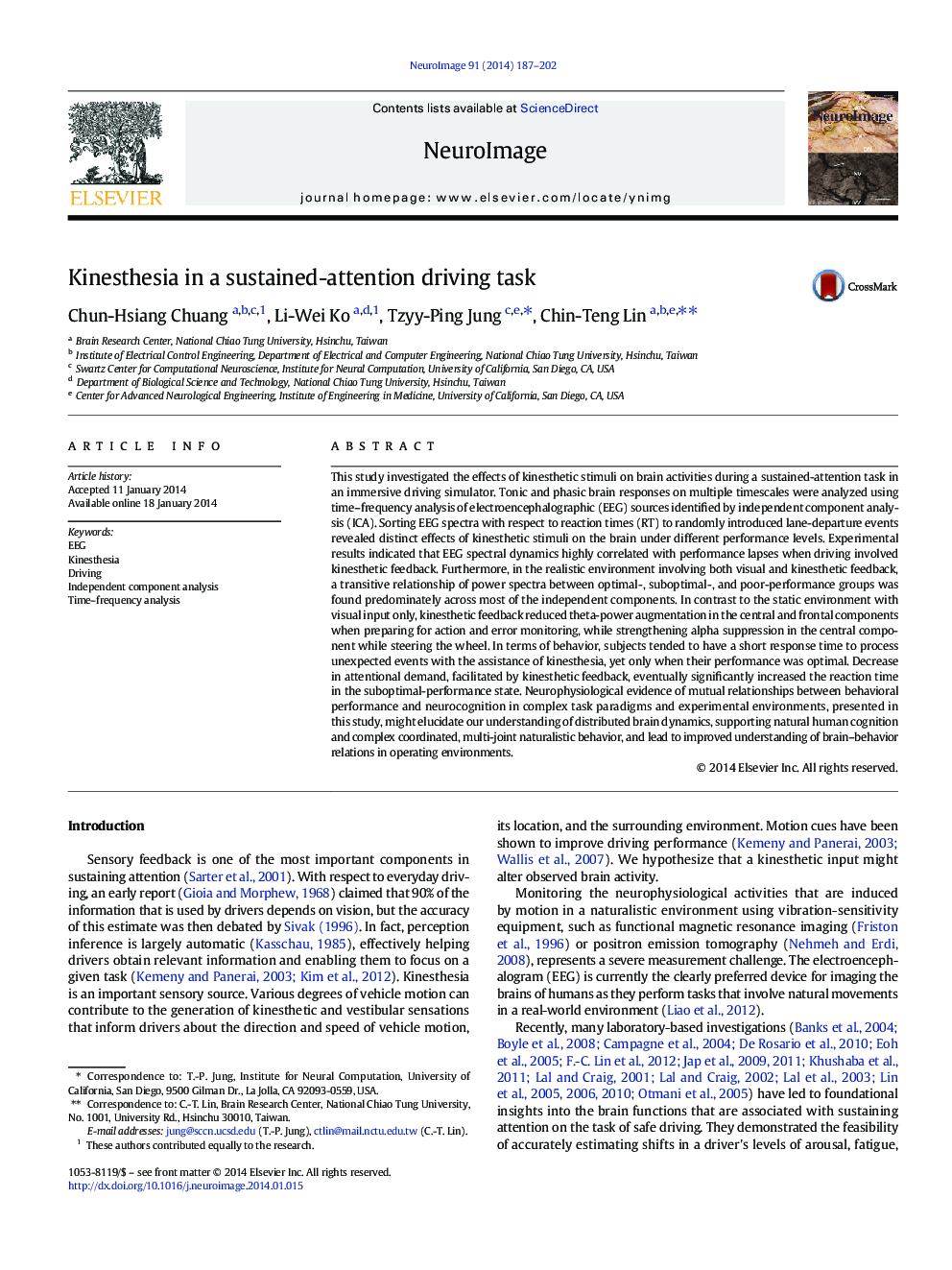| کد مقاله | کد نشریه | سال انتشار | مقاله انگلیسی | نسخه تمام متن |
|---|---|---|---|---|
| 6027634 | 1580914 | 2014 | 16 صفحه PDF | دانلود رایگان |

- We study EEG correlates of kinesthesia during a sustained-attention driving task.
- Subjects perform the driving task with and without kinesthetic feedback.
- Kinesthetic cues considerably affect task performance.
- Kinesthetic cues change spectral dynamics of independent brain processes.
This study investigated the effects of kinesthetic stimuli on brain activities during a sustained-attention task in an immersive driving simulator. Tonic and phasic brain responses on multiple timescales were analyzed using time-frequency analysis of electroencephalographic (EEG) sources identified by independent component analysis (ICA). Sorting EEG spectra with respect to reaction times (RT) to randomly introduced lane-departure events revealed distinct effects of kinesthetic stimuli on the brain under different performance levels. Experimental results indicated that EEG spectral dynamics highly correlated with performance lapses when driving involved kinesthetic feedback. Furthermore, in the realistic environment involving both visual and kinesthetic feedback, a transitive relationship of power spectra between optimal-, suboptimal-, and poor-performance groups was found predominately across most of the independent components. In contrast to the static environment with visual input only, kinesthetic feedback reduced theta-power augmentation in the central and frontal components when preparing for action and error monitoring, while strengthening alpha suppression in the central component while steering the wheel. In terms of behavior, subjects tended to have a short response time to process unexpected events with the assistance of kinesthesia, yet only when their performance was optimal. Decrease in attentional demand, facilitated by kinesthetic feedback, eventually significantly increased the reaction time in the suboptimal-performance state. Neurophysiological evidence of mutual relationships between behavioral performance and neurocognition in complex task paradigms and experimental environments, presented in this study, might elucidate our understanding of distributed brain dynamics, supporting natural human cognition and complex coordinated, multi-joint naturalistic behavior, and lead to improved understanding of brain-behavior relations in operating environments.
Journal: NeuroImage - Volume 91, 1 May 2014, Pages 187-202